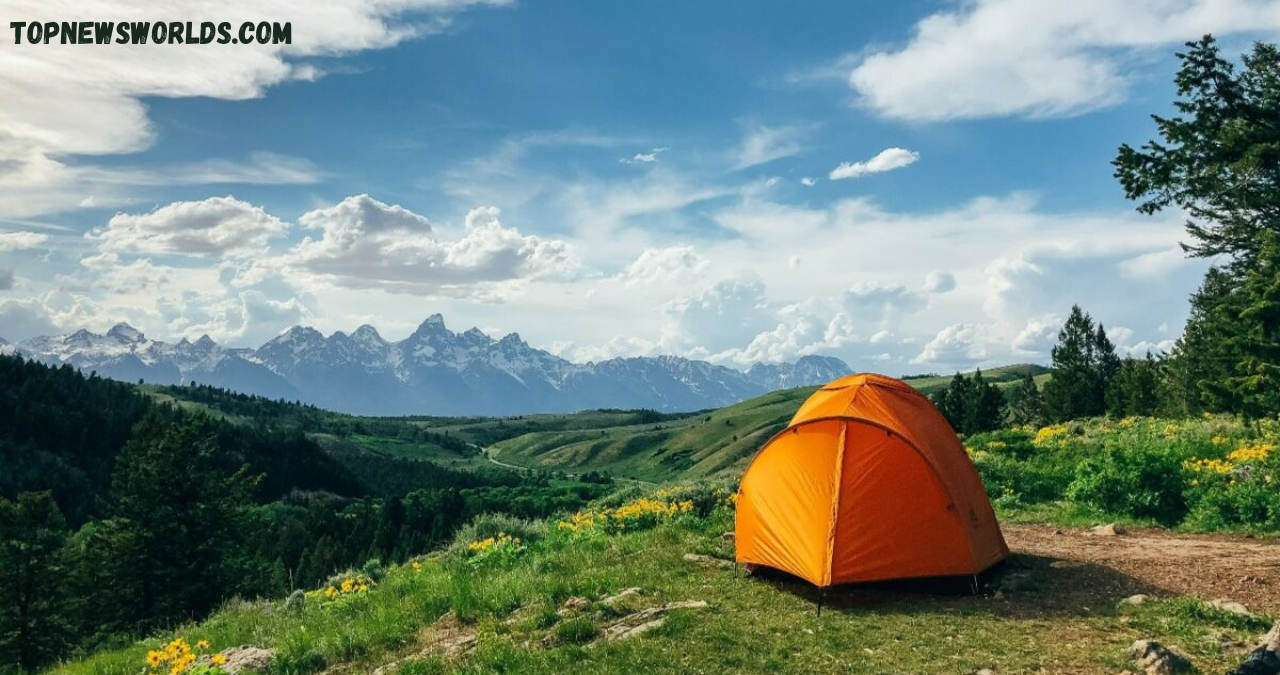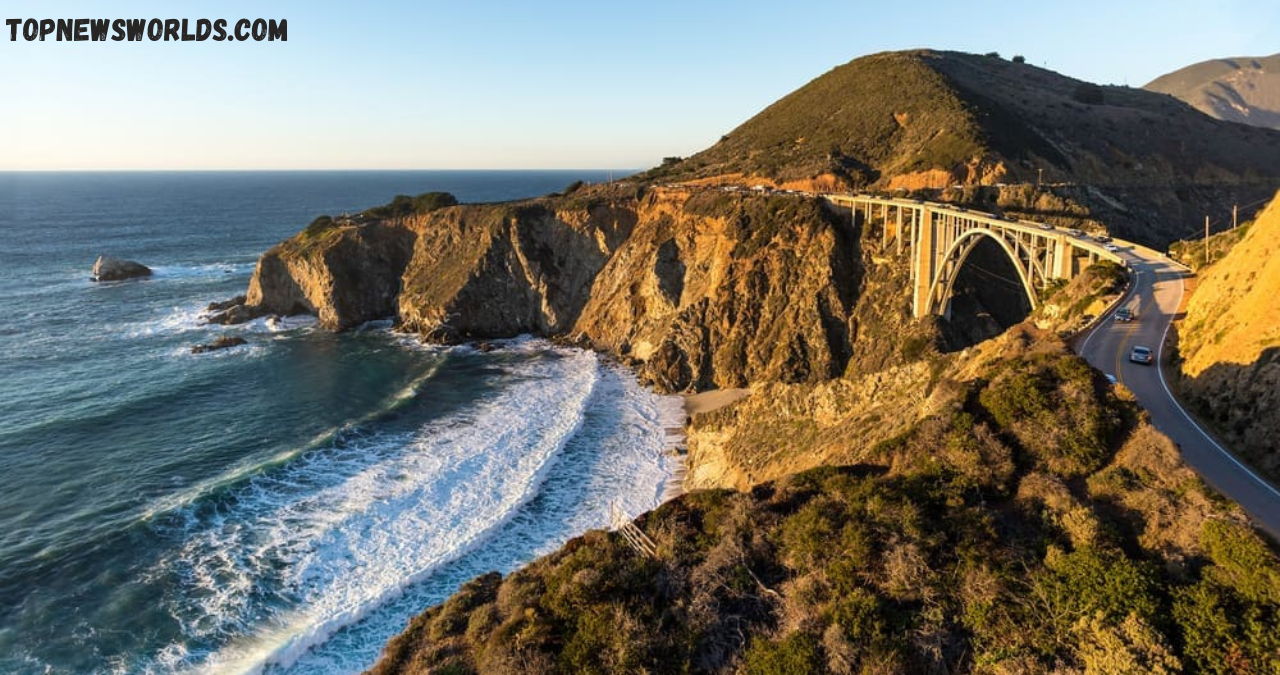Spread Creek Dispersed Camping
Dispersed Spread Creek Dispersed Camping, often referred to as boondocking or dry camping, offers a unique and liberating alternative to the more structured environment of developed campgrounds. Unlike their organized counterparts with designated sites, picnic tables, and often flush toilets, dispersed camping invites adventurers to find their own slice of wilderness on public lands, typically within National Forests or Bureau of Land Management (Spread Creek Dispersed Camping) areas. This style of camping strips away the amenities, demanding self-sufficiency and a deeper connection to nature. The allure lies in the profound solitude it offers, allowing campers to escape the hustle and bustle of everyday life and immerse themselves in untouched landscapes. Beyond the tranquility, dispersed camping is also incredibly cost-effective, as it rarely requires fees or reservations, making it an attractive option for budget-conscious travelers seeking an authentic outdoor experience. However, this freedom comes with significant responsibilities, primarily adhering to the Leave No Trace principles, ensuring that the natural environment remains pristine for future generations.
Spread Creek, nestled within the vast Bridger-Teton National Forest, stands as a prime example of why dispersed camping has captured the hearts of so many outdoor enthusiasts. Its strategic location is arguably its most compelling feature, offering unparalleled proximity to the iconic Grand Teton National Park and the vibrant mountain town of Jackson Hole. This means campers can enjoy the raw beauty and quietude of a dispersed site, yet easily access the world-renowned hiking trails, scenic drives, and visitor amenities of the national park. The area itself boasts breathtaking scenic beauty, with the majestic Teton Range often visible from various vantage points, providing a dramatic backdrop to your wilderness experience. Dense stands of pine and aspen trees provide shade and shelter, while Spread Creek itself winds through the landscape, offering the soothing sounds of flowing water and potential fishing opportunities. What further Spread Creek Dispersed Camping Creek’s appeal is its general accessibility; while some forest roads can be rugged, many are well-maintained, allowing a wider range of vehicles to reach potential campsites. This blend of stunning vistas, convenient access to a national park, and opportunities for wildlife viewing solidifies Spread Creek as a premier destination for those seeking wild freedom.
The very essence of dispersed camping at Spread Creek Dispersed Camping is inextricably linked to the “Leave No Trace” ethic. This set of seven core principles is not merely a suggestion but a critical framework for responsible outdoor recreation, particularly in sensitive ecosystems like those found in the Bridger-Teton National Forest. Ignoring these principles can lead to irreparable damage to the environment, from compacted soil and contaminated water sources to disturbed wildlife habitats and unsightly litter. Emphasizing Leave No Trace from the outset is paramount because the continued privilege of dispersed camping hinges on the collective commitment of every individual to minimize their impact. It’s about leaving no physical evidence of your visit, ensuring that the next person to arrive finds the same pristine environment you did. This commitment to self-sufficiency and environmental stewardship transforms a simple camping trip into a mindful act of conservation, preserving the raw, untamed beauty that makes Spread Creek such a sought-after destination for those yearning for an authentic connection with the wild.
Planning Your Spread Creek Dispersed Camping Adventure
Spread Creek Dispersed Camping and adhering to the myriad regulations and restrictions governing dispersed camping in the Bridger-Teton National Forest is the cornerstone of a successful and responsible trip to Spread Creek. This expansive wilderness area is managed by the US Forest Service, and it is absolutely imperative for prospective campers to consult official Forest Service resources, specifically the website for the appropriate ranger district, for the most current updates on rules and conditions. Regulations can change seasonally due to factors like fire danger, wildlife activity, or road closures, making real-time information invaluable. For instance, most dispersed camping areas, including Spread Creek, typically enforce a 14-day stay limit within any 30-day period to prevent long-term occupation and ensure equitable access for all. Fire restrictions are a particularly critical aspect, especially during dry summer and fall months; a simple campfire can quickly escalate into a devastating wildfire in these arid conditions, so knowing if fires are banned, Spread Creek Dispersed Camping to certain hours, or only allowed in existing rings is crucial. Violating these regulations not only poses a significant environmental risk but can also result in hefty fines and penalties, underlining the importance of diligent pre-trip research.
Spread Creek lies deep within bear country, primarily home to grizzly and black bears, necessitating rigorous adherence to specific etiquette guidelines to ensure the safety of both campers and wildlife. Proper food storage is not just a recommendation but a critical safety measure; all food, scented items (like toiletries), and even cooking gear must be stored in bear-resistant containers, bear boxes if available, or hung from a tree at least 10-12 feet off the ground and 4 feet from the trunk. Never leave food unattended, even for a short while, and always cook and eat away from your sleeping area to minimize attractants near your tent. Being aware of any recent bear activity in the area, often posted at trailheads or ranger stations, is also crucial. Carrying bear spray, knowing how to properly deploy it, and having it readily accessible are absolute musts when recreating in bear habitat. Furthermore, the “pack it in, pack it out” philosophy extends beyond just trash to include human waste; using a trowel to dig a cat hole at least 6-8 inches deep and 200 feet from water sources, or utilizing WAG bags for proper disposal, prevents contamination and maintains the pristine nature of the area. Lastly, respecting vehicle restrictions and sticking to designated forest roads is vital for preventing soil erosion and minimizing impact on delicate ecosystems.
Choosing the optimal time to visit Spread Creek can dramatically influence your dispersed camping experience, as each season presents its own unique set of advantages and challenges. Summer, typically from June to August, offers warm temperatures and long daylight hours, making it ideal for extended outdoor activities like hiking and fishing. However, this is also the peak season, meaning you might encounter more crowds, and fire restrictions are most likely to be in effect due to dry conditions. Bugs, particularly mosquitoes, can also be quite prevalent during this period, so packing insect repellent is essential. Fall, spanning September and October, is arguably one of the most picturesque times to visit. The crowds thin out considerably, the air becomes crisp and invigorating, and the aspens transform into a breathtaking tapestry of gold, orange, and red. This season also coincides with increased wildlife activity as animals prepare for winter, offering enhanced viewing opportunities. The trade-off, however, is colder nights and the potential for early snow, which can affect road accessibility.
Spring, from May to early June, offers a window of opportunity to witness the awakening of the forest, with wildflowers blooming and wildlife emerging from hibernation. The area is generally less crowded than in summer, providing a more serene experience. However, spring also brings with it unpredictable weather, ranging from warm Spread Creek Dispersed Camping days to sudden snow showers, and muddy road conditions as snow melts, potentially limiting access to certain areas. Regardless of the season, a comprehensive gear and supplies checklist is indispensable. Beyond the obvious shelter necessities like a tent and sleeping bag rated for appropriate temperatures, consider a reliable camp stove and fuel for cooking, as open fires may not always be permitted. Water purification is paramount, so a high-quality water filter or purifier along with sufficient water bottles or a reservoir is critical. Navigation tools such as physical maps, a compass, and a GPS device or app are vital, especially since cell service can be spotty. A well-stocked first-aid kit, headlamp, knife, multi-tool, and bear spray are non-negotiable safety items. For comfort, pack appropriate clothing layers to adapt to fluctuating temperatures, bug spray, and sunscreen. Finally, hygiene essentials like toiletries, a trowel for cat holes, and hand sanitizer are a must. Before embarking, ensure your vehicle is fully prepared with a full tank of gas, a spare tire, basic tools, and recovery gear like a shovel or traction boards, as conditions on forest roads can be challenging.
Finding your ideal campsite within the dispersed camping zones of Spread Creek requires both preparation and an understanding of proper etiquette. The most reliable resources for identifying permissible camping areas are the US Forest Service’s Motor Vehicle Use Maps (MVUMs), which clearly delineate roads open to motorized vehicles and indicate where dispersed camping is allowed. Online resources and mobile apps like iOverlander or The Spread Creek Dispersed Camping provide valuable crowdsourced information on established dispersed sites, often with user reviews and photos. Once you’re in the designated zone, the key to selecting a campsite is to minimize your impact. Look for existing disturbed areas, such as old campfire rings or flat spots that have clearly been used before. This helps prevent the creation of new impacts on undisturbed vegetation. Crucially, always camp at least 200 feet (approximately 70 paces) away from any water source, including Spread Creek itself, to protect water quality and riparian habitats. Choose flat, well-drained areas to avoid pooling water and ensure a comfortable night’s sleep. Consider natural windbreaks and the direction of the morning sun when orienting your tent. When setting up camp, be mindful of minimizing your footprint: avoid trampling sensitive plants, do not dig trenches around your tent, and keep your overall camp area compact. Always respect the privacy of other campers by maintaining a reasonable distance between sites and keeping noise levels down.
Activities and Experiences Around Spread Creek
One of the most compelling reasons to choose Spread Creek for dispersed camping is its extraordinary proximity to Grand Teton National Park, transforming a rustic camping trip into an opportunity for world-class exploration. From many spots along the forest roads, the majestic peaks of the Teton Range dominate the skyline, acting as a constant invitation to adventure. Campers can easily embark on day trips into the park, enjoying its unparalleled scenic drives, such as the famous Teton Park Road and the Jenny Lake Scenic Drive, which offer breathtaking vistas and numerous pull-offs for photography. The park also boasts an extensive network of hiking trails catering to all skill levels, from gentle lakeside strolls to challenging alpine ascents, each providing unique perspectives of the iconic landscape. Visiting the park’s interpretive visitor centers, such as Craig Thomas Discovery and Visitor Center or Colter Bay Visitor Center, can enhance the experience with educational exhibits, ranger programs, and up-to-date information on trail conditions and wildlife sightings. The photographic opportunities within the park are virtually limitless, whether capturing the reflections of the Tetons in pristine lakes, the vibrant colors of wildflowers in alpine meadows, or the diverse wildlife that calls the park home, making it a dream destination for shutterbugs.
Beyond the magnetic pull of Grand Teton, the immediate surroundings of Spread Creek within the Bridger-Teton National Forest offer a wealth of opportunities for hiking and nature walks that provide a more secluded and intimate wilderness experience. While not as heavily trafficked as the national park trails, numerous pathways and old logging roads crisscross the forest, inviting exploration. Researching specific trails in the area through Forest Service maps or local hiking guides can reveal hidden gems, from easy forested loops to more strenuous climbs that reward with panoramic views of the Tetons and the sprawling forest below. The abundant and diverse ecosystems around Spread Creek make it a prime location for wildlife spotting. Lucky campers might catch a glimpse of the impressive moose grazing in marshy areas, herds of elk moving through the timber, or agile deer darting through the undergrowth. Birdwatchers will also find the area rich in avian species, from raptors soaring overhead to songbirds flitting through the trees, making a pair of binoculars an invaluable piece of gear for any nature enthusiast looking to truly immerse themselves in the local fauna.
For those who enjoy the tranquility of casting a line, Spread Creek and its nearby waterways within the Bridger-Teton National Forest offer promising fishing opportunities. The creek itself, a tributary to the Snake River, is known to hold various species of trout, particularly cutthroat trout, which are native to the region. Before dropping a line, however, it is absolutely essential to obtain a valid Wyoming fishing license from the Wyoming Game and Fish Department, as fishing without one can lead to significant penalties. Beyond just the license, anglers must familiarize themselves with the specific regulations for the area, which can include limits on the number and size of fish that can be kept, catch-and-release requirements for certain species, and restrictions on bait types. Some areas may only permit artificial flies or lures to protect fish populations. Respecting these regulations is paramount for the sustainability of the fishery and ensuring that future generations can also enjoy this popular pastime. Whether you’re an experienced fly fisherman or a casual angler, the peaceful setting of Spread Creek provides a serene backdrop for a day spent by the water, surrounded by the sights and sounds of the Wyoming wilderness, with the added thrill of potentially landing a beautiful native trout.
The raw, untamed beauty of Spread Creek and its surrounding wilderness provides an endless canvas for photographers of all skill levels, from amateur enthusiasts to seasoned professionals. The star attraction, undoubtedly, is the opportunity to capture the majestic Teton Range, particularly during the magical hours of sunrise and sunset when the peaks are bathed in soft, golden light, creating dramatic shadows and vibrant hues that reflect in the tranquil waters of the creek or nearby ponds. Wildlife photography is another significant draw; with moose, elk, deer, and numerous bird species frequently spotted in the area, patient photographers can capture incredible moments of animals in their natural habitat, offering a unique glimpse into the region’s diverse fauna. Beyond the grand landscapes and wildlife, the subtle details of the forest itself, from delicate wildflowers in bloom to the intricate patterns of tree bark and the gentle flow of the creek, provide endless subjects for creative compositions. Furthermore, the remote location and minimal light pollution make Spread Creek an exceptional spot for night sky photography. On clear nights, the Milky Way arches across the heavens, and constellations sparkle with unparalleled brilliance, allowing photographers to capture stunning long-exposure shots of the cosmos, adding a celestial dimension to their wilderness portfolio and offering a truly unforgettable visual experience.
Responsible Camping and Environmental Stewardship
The privilege of dispersed camping at Spread Creek comes with the fundamental responsibility of embracing and meticulously practicing the seven Leave No Trace principles. These guidelines are not just suggestions; they are the bedrock of environmental stewardship in wild places. Plan Ahead and Prepare is the first and perhaps most crucial step; this involves thorough research into the area’s regulations, packing all necessary gear and food to be self-sufficient, and understanding potential hazards like weather changes or wildlife encounters. Travel and Camp on Durable Surfaces emphasizes sticking to existing roads, trails, and established campsites to prevent further environmental degradation. This means avoiding the creation of new fire rings or tent sites, and resisting the urge to drive off-road. Dispose of Waste Properly is critical, requiring campers to pack out everything they pack in, including all trash, food scraps, and even human waste, utilizing catholes (6-8 inches deep, 200 feet from water) or WAG bags for human waste disposal. It’s about leaving no trace that you were ever there.
The remaining principles further reinforce this commitment to minimizing impact. Leave What You Find reminds visitors to refrain from disturbing natural objects like rocks, plants, or historical artifacts; these belong to the landscape, not to individual collections. Minimize Campfire Impacts is especially vital in dry regions like Spread Creek; this means using existing fire rings, keeping fires small, never leaving a fire unattended, and extinguishing it completely with water and dirt until it’s cool to the touch. Respect Wildlife involves observing animals from a distance, never feeding them (which can habituate them to humans and lead to dangerous encounters), and always securing food and scented items to prevent attractants. Lastly, Be Considerate of Other Visitors encourages campers to maintain quiet hours, respect the privacy of others, and ensure their enjoyment of the wild is not disturbed by your presence. Adhering to these principles collectively ensures that the wild beauty of Spread Creek remains unspoiled for generations to come, allowing the delicate ecosystem to thrive undisturbed by human activity, upholding the very essence of dispersed camping.
While the principles of Leave No Trace apply universally, Spread Creek presents its own set of specific challenges that campers must be acutely aware of to ensure a safe and responsible visit. Foremost among these is Bear Management. As a highly active bear country, the risk of human-bear encounters is constant. The primary challenge lies in consistent and thorough food storage and attractant management. Even a small crumb or scented item left unsecured can draw a bear to your campsite, potentially leading to property damage, injury, or worse, the unfortunate need to relocate or euthanize the bear. Campers must commit to using bear-resistant containers, storing food in vehicles, or properly hanging food. This vigilance extends to cooking areas, which should be kept impeccably clean and away from sleeping areas. Another growing challenge is the Crowding and Impact from increased popularity. As more people discover the beauty of Spread Creek, the pressure on the environment intensifies. This can lead to overused campsites, increased litter, soil compaction, and a loss of the very solitude that draws campers there. The challenge for individual campers is to spread out, choose less-used sites, and practice extra diligence in minimizing their footprint to mitigate these cumulative impacts.
Finally, Road Conditions at Spread Creek can be highly variable and pose a significant challenge. The forest roads are unpaved and can range from well-graded gravel to rough, rocky, and muddy tracks, especially after heavy rains or snowmelt. This variability means that a vehicle that might have handled the roads easily in dry conditions could struggle or even get stuck during adverse weather. The challenge is twofold: first, to research current road conditions before your trip by checking with the Forest Service or local sources, and second, to ensure your vehicle is adequately equipped for rough terrain, including having high clearance, four-wheel drive, and emergency recovery gear like a shovel or traction boards. Underestimating road conditions can lead to dangerous situations, vehicle damage, and the need for costly recovery services. By understanding and actively preparing for these specific challenges, campers can significantly enhance their safety, minimize their environmental impact, and contribute to the long-term sustainability of Spread Creek as a pristine dispersed camping destination.
For those inspired to give back to the natural spaces they enjoy, exploring Volunteering and Conservation Efforts can be a deeply rewarding aspect of their time near Spread Creek. Public lands, while vast, often rely on the dedication of volunteers and the support of conservation organizations to maintain their beauty and accessibility. Many local and national non-profits, in partnership with the Forest Service, regularly organize trail maintenance projects, litter clean-ups, invasive species removal, and educational initiatives. These opportunities allow visitors to actively participate in preserving the very landscapes they cherish, fostering a deeper sense of connection and responsibility. Supporting organizations that are dedicated to maintaining public lands, whether through donations, membership, or direct participation in their programs, is another impactful way to contribute. These groups often advocate for sustainable land management practices, fund critical restoration projects, and educate the public on responsible outdoor recreation. By engaging with these efforts, campers can move beyond being passive users of the land to become active stewards, ensuring that the wild freedom offered by places like Spread Creek endures for future generations to explore and enjoy. This collaborative approach between visitors, land managers, and conservation groups is essential for the long-term health and vitality of our shared natural heritage.
Conclusion
Spread Creek offers an unparalleled invitation to experience the wild freedom of dispersed camping, nestled against the breathtaking backdrop of the Teton Range and within easy reach of Grand Teton National Park. It’s a place where the symphony of nature replaces the hum of daily life, where starry nights stretch endlessly above, and where wildlife roams freely. This guide has aimed to equip you with the essential knowledge for planning a safe, enjoyable, and responsible adventure, from understanding regulations and preparing your gear to navigating the forest roads and immersing yourself in the myriad activities the area offers.
You May Also Read: https://topnewsworlds.com/pacific-coast-highway-malibu/




